Temperature and climate test chambers use compressor-based cooling to cool the test space. Heating, ventilation, and the compressor are the largest electricity consumers in the test chamber. Depending on their size, the compressors used have an output of several kilowatts and require a large amount of electricity to achieve high cooling performance.
The operating costs of test equipment are driven largely by electricity consumption.

New refrigeration technology saves electricity
Our CO₂ refrigeration technology uses much less electricity in our climate and temperature chambers than comparable systems with R449A/R469A. These test devices not only meet all regulatory requirements but also help reduce costs and support sustainability goals.
Customer trials have shown that a single CO₂ climate chamber consumes 10,000 kWh less energy per month than its predecessor. Depending on electricity prices, this can translate to several thousand euros in monthly savings.
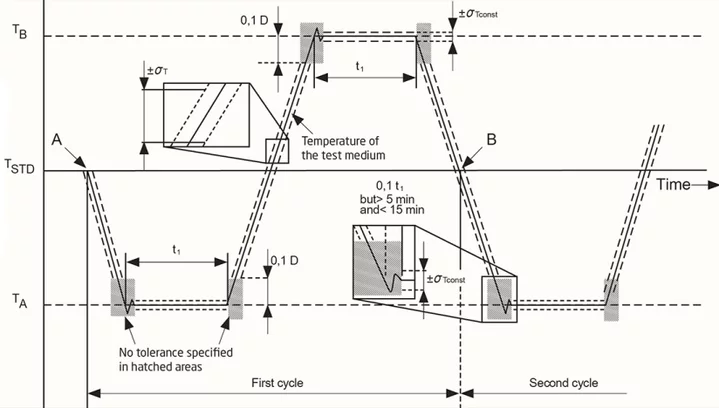
Tests involving temperature cycling offer the greatest savings potential
Test chambers consume the most energy during test cycles with rapid temperature changes. These are often referred to as stress tests, rapid cooling, stress screening, or ESS. One example is testing in accordance with IEC 60068-2-14 NA or Nb. Hold times at constant temperature for conditioning the test specimens alternate with rapid cooling or heating.
For demanding electronics, test temperatures often range from −40°C (lower limit) to +120°C (upper limit). Temperature change rates are typically 5 K/min or higher.
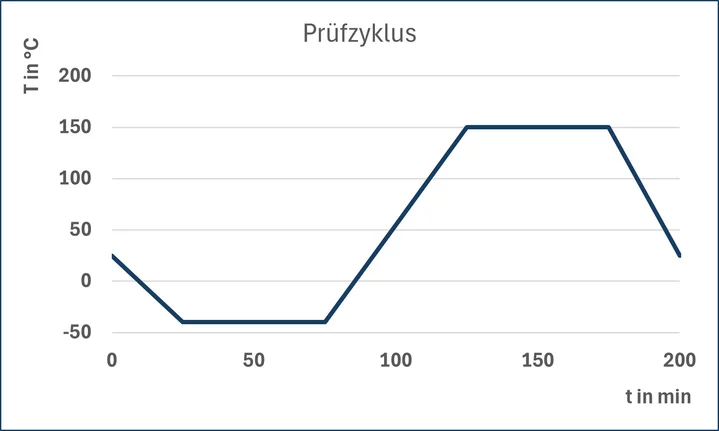
Test cycle
- 30 days
- −40°C to 150°C
- 5 K/min
- 60-minute hold time
- Electricity price: €0.28/kWh
The devices were connected to the same cooling water circuit and operated with an empty test space.
Result: Up to €3,000 in savings per month
| Devices | Refrigerant | Test space size | Electricity consumption | Costs |
|---|---|---|---|---|
| C2/1,000/70/10 | CO₂ | 1,000 l | 3,870 kWh | €1,083 |
| C/1 000/70/5 | R449A/R469A | 1,000 l | 5,130 kWh | €1,436 |
| VCS 7048-15 | R404A/R23 | 480 l | 5,940 kWh | €1,663 |
| VCS3 7048-15 | R404A/R23 | 480 l | 6,600 kWh | €1,848 |
| VCS 7080-15 | R404A/R23 | 800 l | 14,640 kWh | €4,100 |
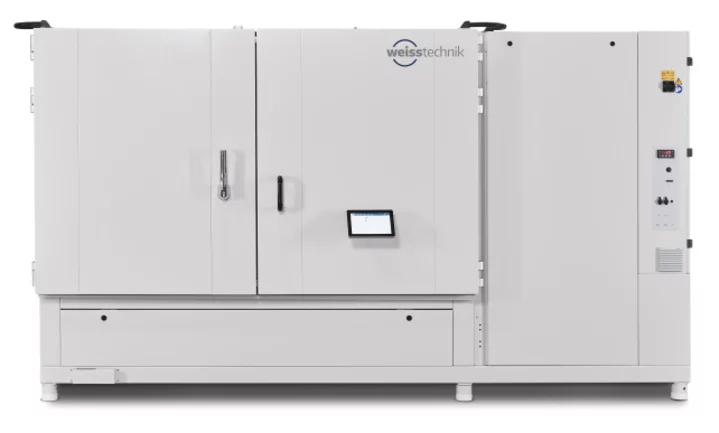
Other systems with similar savings
CO₂ refrigeration technology also reduces electricity consumption in devices with larger test chambers. In a ClimeEvent with a 3,600-liter test chamber, 33% less electricity was consumed during the reference test cycle. We measured similar values in smaller, lower-capacity devices.
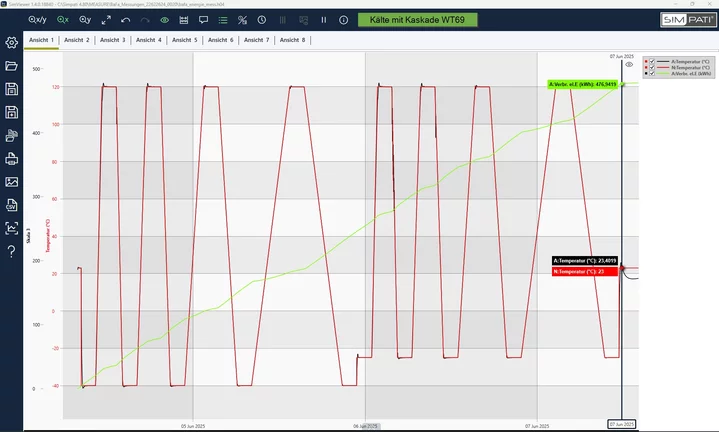
30% less electricity consumption
| Instrument | Refrigerant | Test space size | Electricity consumption~ |
|---|---|---|---|
| ClimeEvent C/3600/50/4/W | CO₂ | 3,600 l | 317 kWh |
| ClimeEvent C/3600/70/4/W | R449A/R469A | 3,600 l | 477 kWh |
| ClimeEvent C2/180/50/3 | CO₂ | 180 l | 90 kWh |
| ClimeEvent C2/180/70/3 | R449A/R469A | 180 l | 136 kWh |
| ClimeEvent C2/340/50/3 | CO₂ | 340 l | 92 kWh |
| ClimeEvent C2/340/70/3 | R449A/R469A | 340 l | 133 kWh |
~Result after 75 h of reference operation with temperature cycling
White paper with measured data
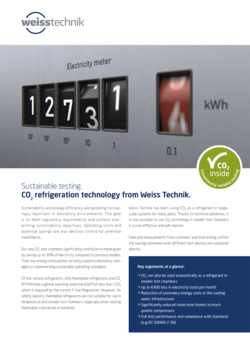
Saving energy with CO₂ refrigeration technology
Factsheet

Saving energy with CO₂ refrigeration technology
Factsheet: Comparison of electricity consumption and CO2 emissions

